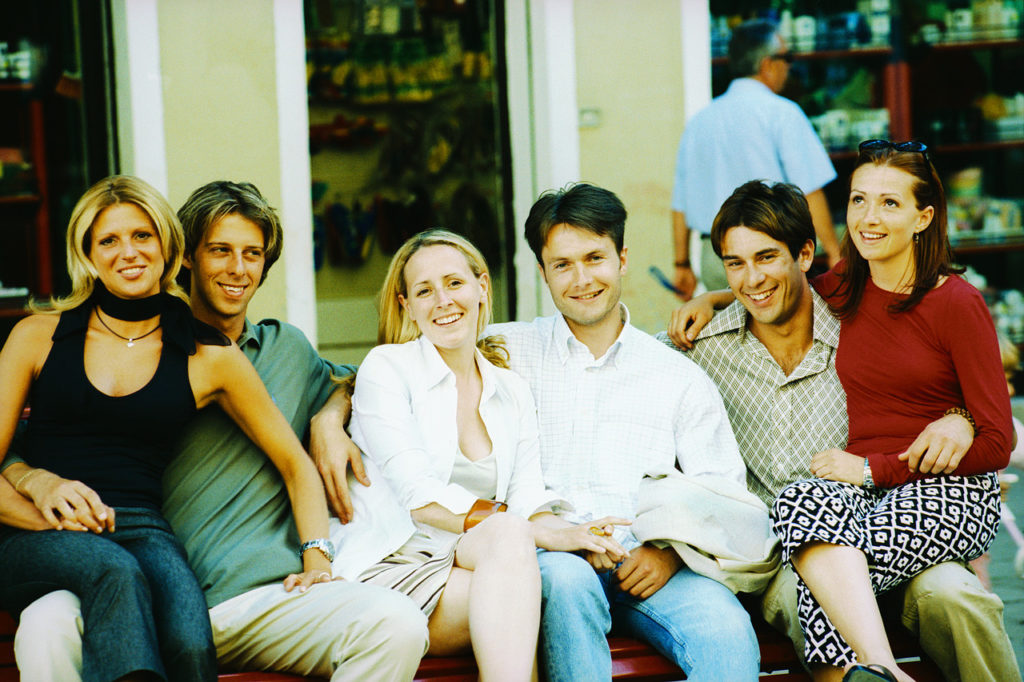Gimme Love
“Gimme Love, Gimme Love, Gimme Sweet, Sweet Love…” That’s from George Harrison, but one could choose any one of thousands of popular over the years where the sentiment is the same: “I love you, I need you, I can’t live without you.”
Ah, where is the border between loving and wanting, between romantic love and true love, between getting our needs met and being there for others?
The allure of the romantic is so great that it binds our consciousness in a myriad of ways in daily life—television, magazines, how we dress, how we dine, ideas we place in our children’s heads, and the fantasies of single people and married alike.
For example, I recall my delight on the day my husband and I got engaged. It was Valentine’s day, and a more romantic event you could not imagine. He took me out to dinner and the theater. After a sumptuous candlelit meal he told me he’d left something in the car, and returned shortly with a huge package, brightly wrapped with hearts and bows. Inside was another package, even more beautifully wrapped. Inside of that there were chocolate hearts and red heart candies—and still another box. This box had on the cover a 9 made out of silver and red glitter. Of course I was delighted, but I wasn’t sure at first what the number meant.
“It’s Box Number 9!” he said.
“You remembered!” I smiled. He was referring to an exercise in one of my books for creating what we want in our lives. It was a way to visualize and plan our dreams. In the book I told the story of when I had done the exercise myself. I’d filled in all the boxes except the last one, number nine. For a while I couldn’t think of anything that should be in that box, but then suddenly I realized that Box Number 9 was a partner I had not yet met.
“Open it,” he urged, bringing me back to the present.
“Oh,” I had thought the box itself was the gift—and that he was letting me know with this sweet symbol made by him that he was that partner.
I lifted the lid. Inside sparkled an engagement ring which he had designed–two hearts on either side of a diamond. I was speechless. What a symbol of our love! I floated through the theater program barely noticing as I kept checking the new ring flashing on my finger. It was the perfect romantic engagement—what I’d always dreamed of.
Ah, those dreams.
But then comes life. What I want vs. what he wants; what she said vs. what he thought she said. What we agreed to vs. what’s actually happened. This is where the true test of love comes. After the honeymoon is over, do we still really want to be “one” with each other? And if so, what does it take?
We all want to be loved. It is a core human need. We want to be touched, to be held, and to be affirmed. We want our successes to be applauded, and our mistakes to be forgiven. And we want things to go our way. Studies show that infants who receive only a minimal amount of nurturing actually do not develop as well, physically or emotionally. Thus, a certain amount of caring is needed simply for a person to stay alive.
Yet most of us did not receive all the love we wanted. No matter how much effort our parents put into raising us, there are always hurts and scars from the challenges of life. And what happens with those tender places where damage occurred is that we feel something of a “love-deficit.” And so most of us live our lives always looking for love, dancing around what may be little insufficiencies or gaping holes in our hearts. No matter what our age, the romantic fantasy of that perfect person who loves us unconditionally regardless of small quirks or massive failures somehow seems to be a constant to which we gravitate.
What then occurs is that we bring our love-deficits into our relationships, wishing that other person would just love us unconditionally, even though we have just a few conditions on our own loving. So when two people with love-deficit get together we get conflict. And once the romantic fantasy fades and real life sets in, we are faced once again with how to get our love needs met. Ah, how much this is the human condition.
Yet there is another angle on this condition, and its solution comes to us from every world religion, not to mention the tomes of codependency literature that have emerged over recent years. As much as we want to have those deficiencies filled by another–a natural byproduct of losses we experienced as a child–still, it is for us to fill those voids ourselves.
Ironically, the more we give love to ourselves, the more we have to give to others. And inevitably, as it goes out, it comes back. When we take responsibility for nurturing and caring for ourselves, and for letting in the love that is there in whatever form it is given to us, then we are filled. But we must take the time to acknowledge that which we receive. In acknowledging it, we make it our own, and thus no longer live with that experience of deficit.
Then, as we are filled, we have more to share. We go to the next level, and are more capable of giving that which we want—that priceless unconditional love. And, at the same time, we become able to give more. When that void does not consume our energies, then we need less from others and the love within us can spill over and touch and heal those we care about in our lives. “Gimme love” is no longer our concern, for the love just flows to and from, in and through us. And isn’t that what life is all about?











